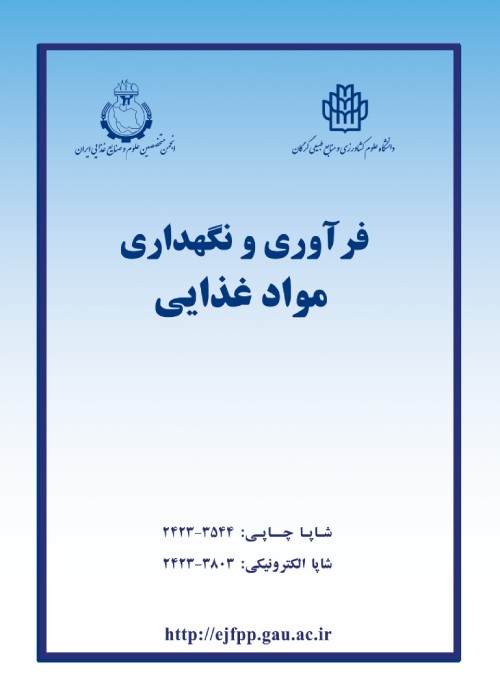Microwave-assisted extraction of pectin from Faba bean hulls and evaluation of its Physicochemical properties
Since, there is an increasing demand for pectin with different functional properties, besides its beneficial health effects, many research has been done to find the raw materials for pectin production with optimal technological characteristics. The decortication process for Faba bean generates 14.28 % of the total weight of the dry beans as hulls which, at present, are disposed as waste and, in addition to environmental problems, causes the loss of sources rich in bioactive compounds.
In this study, the effects of some independent variables, including microwave power (360, 540 and 720 W), irradiation time (1, 2.5 and 4 min), solution pH (1, 2 and 3), and solid-to-liquid ratio (1:15, 1:20 and 1:25) on the yield and degree of esterification (DE) of pectin extracted from fava bean hull by microwave irradiation were investigated. The response surface methodology (RSM) using Box-Behnken design was used to optimize the extraction conditions.
The results indicated that the extraction yield and DE of the extracted pectins were 1.01- 21.02% and 6.44- 39.23%, respectively. By increasing the microwave power, irradiation time, and solid-to-liquid ratio and decrease in solution pH, the extraction yield of pectin increased, while DE decreased. The optimum conditions to reach the maximum extraction yield and DE were in microwave power of 719.99 W, irradiation time of 1 min, pH value of 2.99, and solid-to-liquid ratio of 1:25, resulting in extraction yield of %14.48 and DE of %28.25. On the other hand, the highest stability of the pectin-stabilized emulsion was at 4°C and after one day. The results of DE showed that fava bean hull pectins belonged to low ester pectins; while based on the results of FT-IR spectrum, this polysaccharide probably belonged to high-methoxyl (HM) pectin. The rheological tests showed characteristic behavior of viscoelastic for the fava bean hull pectin extracted in optimum conditions. At both concentrations (0.5% and 1.5%), the pectin dispersion exhibited elastic behavior followed by the viscous behavior at higher angular frequencies. Moreover, the apparent viscosity of samples remained constant with increasing the shear rate (showing the Newtonian flow behavior). The FT-IR analysis confirmed the chemical structure of pectin in the extracted samples. The pectin extracted from the faba bean hull can also produce gels with a suitable degree of hardness and high lightness.
Based on the results of this study, faba bean hulls contain adequate amounts of pectin, suitable for commercial utilization and microwaves could be applied as a novel high-efficient method to extract pectin from faba bean hulls.
- حق عضویت دریافتی صرف حمایت از نشریات عضو و نگهداری، تکمیل و توسعه مگیران میشود.
- پرداخت حق اشتراک و دانلود مقالات اجازه بازنشر آن در سایر رسانههای چاپی و دیجیتال را به کاربر نمیدهد.



